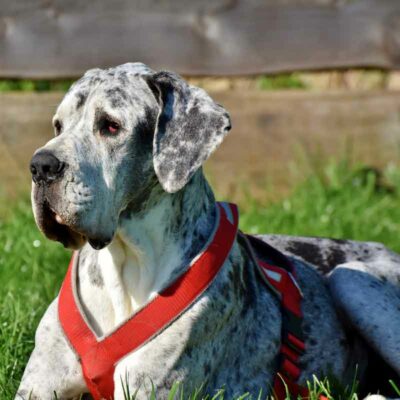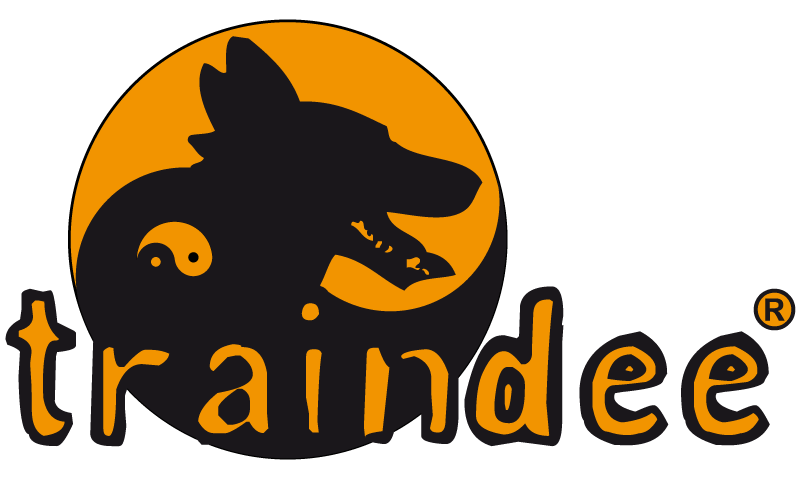
The Great Dane dog breed
Originating in Germany, Great Danes stand as one of the largest dog breeds globally. These dogs are renowned for their towering stature, featuring large heads, long muzzles, extended limbs, slender bodies, and a short coat.
While their commanding size places them in the category of giant dogs, it’s their regal, intelligent, and devoted nature that truly endears them to dog enthusiasts. Great Danes form close bonds with their owners, making them superb family companions.
Despite their grandeur, these dogs are well-suited for most households. Though their lifespans tend to be shorter than those of smaller canines, the cherished moments spent with these gentle, affectionate giants are undeniably rewarding.
Characteristics of the Great Dane
Known as the “gentle giants,” Great Danes exude a temperament that aligns with this endearing moniker. These dogs epitomize calmness and composure, whether at home or in public, especially when trained effectively.
Their loving disposition makes them cherished family members. Great Danes are exceptionally patient and readily get along with children. However, due to their considerable size, they can inadvertently knock over small children, so careful supervision is advisable when they interact with young kids.
They typically coexist harmoniously in multi-pet households, displaying a friendly disposition towards other animals, particularly when raised together.
History of the Great Dane
Although their name may suggest otherwise, Great Danes trace their roots back to Germany, albeit with potential ancient origins. These dogs likely descended from a lineage that encompasses the English Mastiff and Irish Wolfhound. Originally developed as boar hunting dogs, Great Danes were tasked with subduing formidable boar, holding them until the hunters could intervene.
With the passage of time, their role shifted from hunting to that of a watchdog and companion. German breeders endeavored to diminish their aggression, thus fostering the gentle and friendly disposition prevalent in Great Danes today.
Great Danes made their debut in the United States during the late 1800s, gradually garnering popularity. The breed received official recognition from the American Kennel Club (AKC) in 1887.
Great Danes boast the prestigious title of the world’s tallest dog, as acknowledged by the Guinness World Records. Among these towering canines, Zeus stands out as a recent record holder, measuring an astonishing 44 inches tall at the shoulder. Great Danes have also left their mark in popular culture, with iconic appearances such as Scooby-Doo in the world of animation and the titular character in film adaptations of Sir Arthur Conan Doyle’s “The Hound of the Baskervilles”
Great Dane Care
Caring for a Great Dane largely mirrors the responsibilities of looking after short-haired breeds of smaller sizes. However, their grand stature necessitates additional considerations to ensure their well-being during exercise. Early obedience training is paramount to nurturing a well-rounded adult dog with good behavior.
Exercise
Great Danes display playfulness and exuberance in their youth. To maintain the health of their developing bones and joints, it’s essential to avoid activities such as jumping and running until they reach at least 18 months of age. As they mature, their energy levels tend to become more moderate. Regular exercise, such as daily walks, helps to keep them fit and in good health. Given their limited propensity for jumping over fences, most Great Danes can safely enjoy playtime within a fenced yard.
Grooming
Great Danes possess short, dense coats that typically require nothing more than basic grooming, including weekly brushing. They do experience pronounced shedding during seasonal transitions, particularly in spring and fall. Bathing, usually conducted once or twice per month, is a part of their routine care.
For Great Danes with natural (floppy) ears, routine ear examinations and cleaning are essential. The practice of surgically cropping their ears is becoming less common and is even prohibited in some regions.
Regular nail trimming every few weeks is essential for their well-being, preventing issues like splitting or tearing. To ensure proper oral hygiene, brushing their teeth several times a week is advised, thereby mitigating the risk of gum disease.
Training
Efficient obedience training and socialization are paramount for Great Danes. Their substantial size makes them challenging to manage if not properly trained. These dogs might not fully comprehend their large dimensions, necessitating vigilance to prevent jumping, leaning, and leash pulling.
Great Danes are inherently receptive to housetraining and thrive when indoors with their families rather than left alone in the yard. Crate training, employing crates suitable for giant breeds, is recommended.
Common Health Problems
Responsible breeders adhere to the highest breed standards established by kennel clubs like the AKC, minimizing the likelihood of inheriting genetic conditions. Nonetheless, some hereditary health problems can afflict Great Danes. Common issues to be mindful of include:
- Gastric Dilatation-Volvulus (GDV or Bloat): A life-threatening condition in which the stomach fills with gas and twists, potentially requiring preventive surgery.
- Hip Dysplasia: A common ailment, particularly in large and giant breeds, resulting from malformations in the hip joints.
- Elbow Hygroma: A non-cancerous, fluid-filled growth that can manifest on the dog’s elbow, usually due to prolonged pressure on hard surfaces.
- Dilated Cardiomyopathy (DCM): A heart condition impacting the heart’s chambers, potentially leading to congestive heart failure when left untreated.
- Wobbler Syndrome (Cervical Spondylomyelopathy or Cervical Vertebral Instability): Occurs due to compression on the spine in the neck, affecting the dog’s neurological functions.
Diet and Nutrition
Great Dane puppies should begin with large-breed puppy food to ensure they do not grow too rapidly, which could lead to dysplasia and other future health concerns. Veterinarians often recommend feeding these dogs multiple small meals throughout the day to prevent Bloat, as opposed to one or two large meals. Some Great Dane owners opt for slow-feeder bowls to achieve this goal.
Adult Great Danes have substantial nutritional requirements, consuming up to 10 cups of food per day. Care must be exercised to prevent overfeeding, and guidance from a veterinarian is advisable to determine the appropriate diet and portion schedule based on the dog’s age, weight, and activity level, thus averting the onset of obesity.


